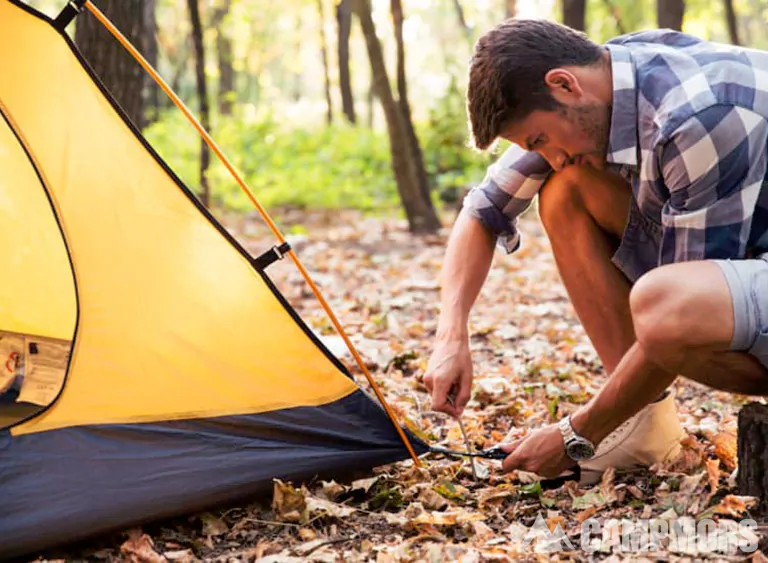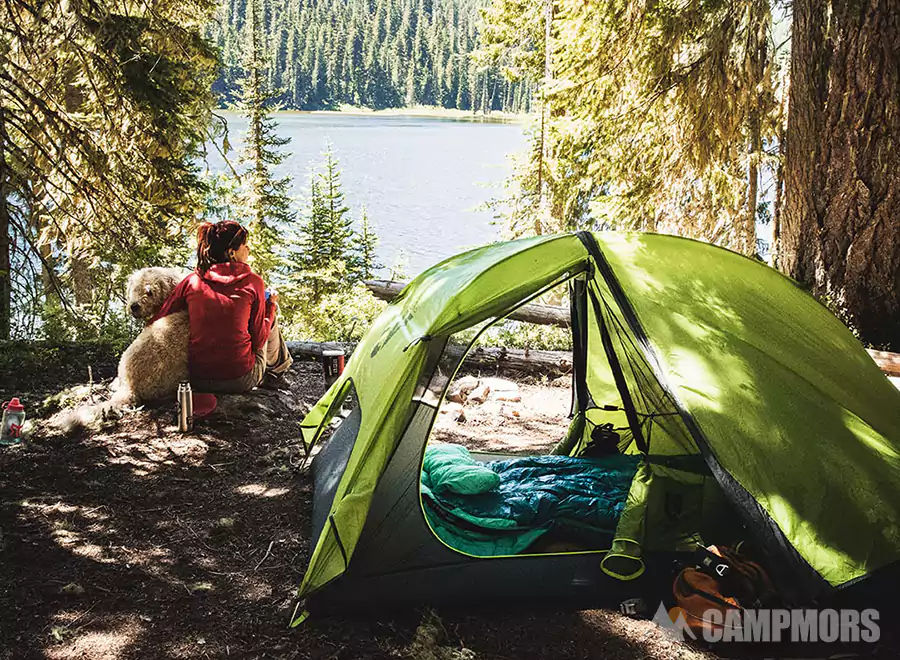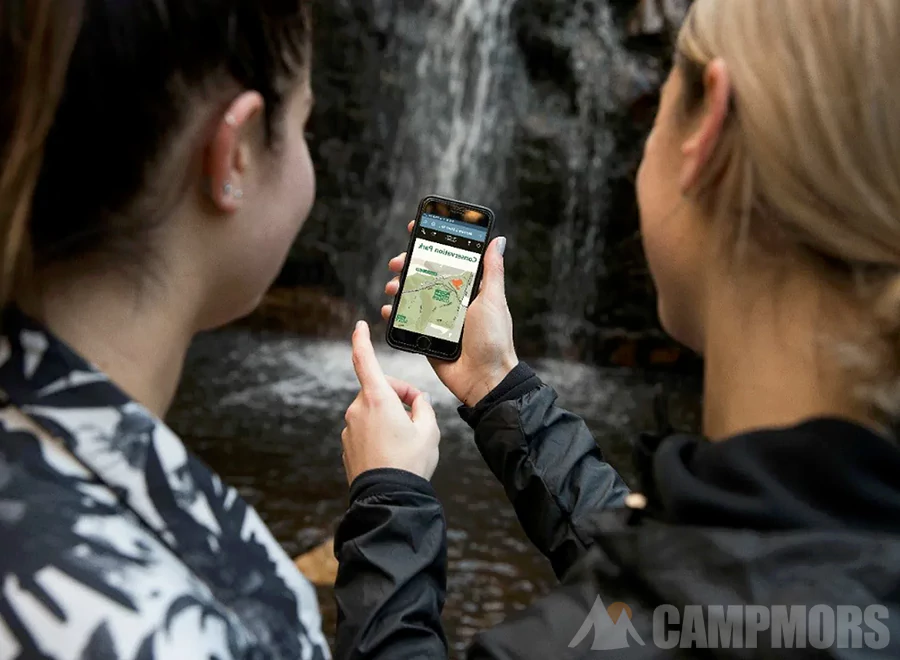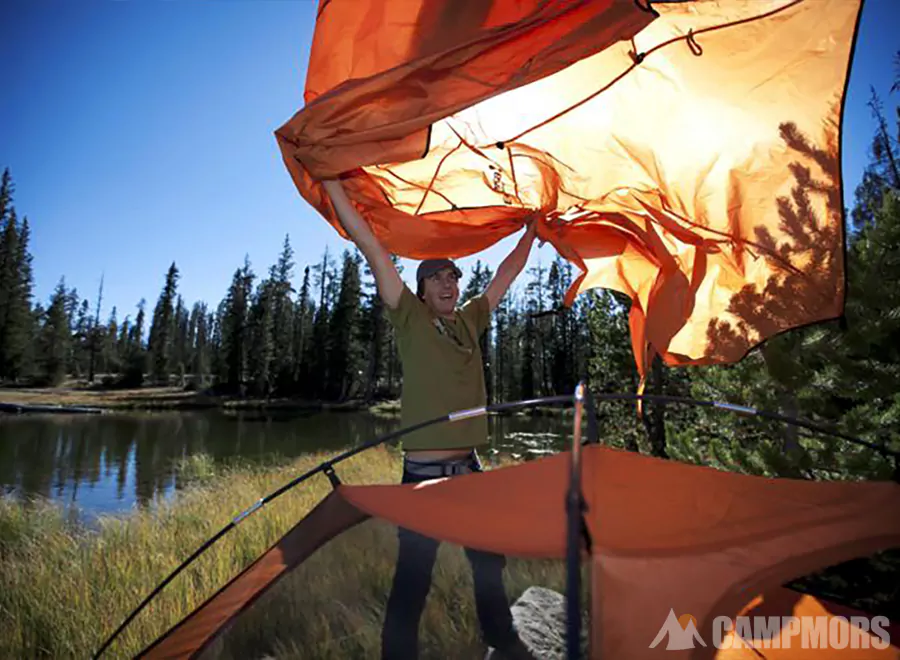
Sheng Dada
- May 29, 2022
7 Key Steps To Building A Tent. And Advice On Best Maintenance.
After our “Tips before pitching a tent” guide, I believe you should have done your preventive preparations perfectly. The next step is to set up the tent. Perhaps there are certain differences in styles and shapes of tents, but the basic structure and steps are similar. Hope the following guidance can help you.
How to build a tent?
Step 1: Set the bottom of the tent.
After choosing a suitable ground, first lay a layer of waterproof tarpaulin or floor mat to protect the bottom of the tent and improve the overall service life of the tent. Different floor mats have different effects, some of them increase softness, and some are waterproof. If your mat is larger than the bottom of the tent, you will need to tuck the visible edge back under the tent. Avoid rainwater coming back to the tent base.
Step 2: Unfold the tent.
After we set the floor mat at the bottom of the tent, we can unfold our tent. You should have a good idea of where the tent door is facing in order to orient, as it is difficult to reposition once it is secured. If you’re ok with the orientation of the tent, go ahead and spread the tent poles apart and unfold. Also, make sure the nails or stakes are within reach before proceeding to the next step.
Step 3: Connect the tent structure poles.
A pole is often required to connect and support the tarpaulin between the tarpaulins of the tent. The poles can be attached with bungee cords or bungee cords, generally they have their own numbers and you have to attach them yourself. Connect the poles by matching the number or color on each pole or following the tent instructions. For tents that don’t include pole number and color, it may be helpful to label each pole to make it easier the next time you pitch your tent.
Step 4: Insert the tent poles into the corresponding flaps of the tent.
Once you’ve connected all the poles, place them on the flat tent. Then insert the poles into the corresponding fixing eyelets in the tent. If you are buying a fully manual tent, then you need to have some patience and follow the instructions to find the corresponding poles to connect them together. Of course, don’t forget to pass the pole through the fixed hole of the tarpaulin during this process. This is really a tedious thing. However, campmors offers many fully automatic or semi-automatic tents for everyone. You just need to hold down a switch or clip with one hand and pull with the other to raise the tent (as easy as opening an umbrella) to easily deploy the tent.
Step 5: Put up your tent.
If you are using a small automated tent, you can completely ignore this step. And if it is a large tent, you need to call your partner to do it together. Insert the poles into their respective fixing positions, then slowly raise the poles to gradually spread the top and bottom of the tent. Stop until it is fully opened.
Step 6: Fix the tent.
Once you’ve got the tent fully up and all looks OK, you can use nails, rope, or stakes to secure the corners of the tent in one place, be it ground or a solid tree. In this way, it can be very effective against wind. No one wants their house to fly like a kite. At the same time, the tent corners need to be pulled apart as far as possible to eliminate any slack before fixing with nails. The nails or stakes should be pulled as far as possible and then dig into the ground as far as possible, away from the tent at a 45° angle. This also provides greater tension.
Step 7: Add a rain cover to your tent.
In the tent series of campmors, some tent materials are made of waterproof Oxford cloth, and this step can be omitted. Some tents come with a rain cover. It is an additional piece of cover tent to achieve waterproof effect.
Start by placing the rain cover on top of the tent. The direction is the same as the direction of the tent, just don’t hinder the entry and exit. Then fix the windproof ropes of the rain cover in turn in a diagonal manner. Also, fix the rope so that the tent is 45° away from the inner tent as far as possible.
Basically, at this stage, your camp tent is successfully set up. Of course in addition to learning how to set up a tent, you should also know any proper packing and maintenance. in order to maximize the life of your tent. For specifics, see the tips for maintaining your tent below.
Now, the next time you plan your camping, you’ll be able to create a comfortable, sturdy, and dry shelter for the night.
Was this guide on how to pitch a tent helpful? Hope the above suggestions can help you. If you have other additional suggestions, please let us know in the comments below. We’d love to hear your opinion.
How To Pack And Maintain Your Tent?
The sun is up. It’s a new day, ready to set off for the next journey. Please dispose of your tent properly before you are ready to pack and go. In order to extend the life of the tent and provide better service in the future.
Air dry the tent.
The first thing to note is that you make sure your tent is air-drying before packing. Avoid the growth of mold and bacteria on the surface of the tent that will affect your health. After the rain, let the tent dry thoroughly inside and outside before packing to avoid adverse effects on the tent. You can hang it on a rope or branch until it is completely dry.
Organize equipment.
Sort and pack components such as tent poles and poles for easy use next time. The best way to organize fabrics like floor mats and tents is to roll them up rather than fold them. If it must be folded, please avoid the same crease every time when storing. This creates weak points in the fabric, which enlarge the holes.
Bale.
When everything is in order, it’s time to put them in the bag. Usually we prioritize fabrics into bags while avoiding contact with sharp objects. Finally, put the poles and tent poles arranged in the front carefully into the bag, which may be crowded, please be gentle to avoid hurting the tent fabric.
Regular maintenance.
There can be long gaps between camping trips. It should be noted that when the tent is not used, it is often taken out to ventilate and bask in the sun to ensure that there is no moisture and moisture that damage your tent. At the same time, it can also prevent mice or insects from living in it. This way you can keep your tent dry and bacteria free for a long time so your next trip will go smoothly.
Share :



